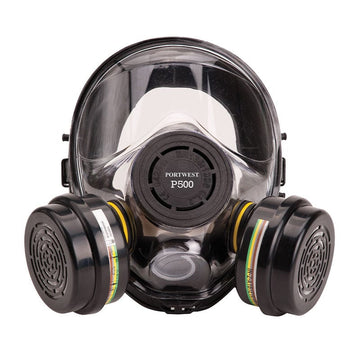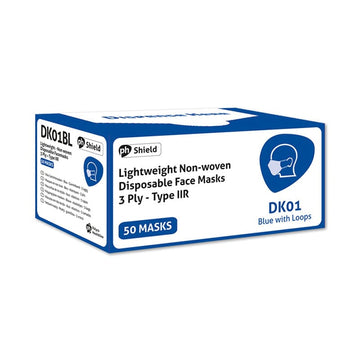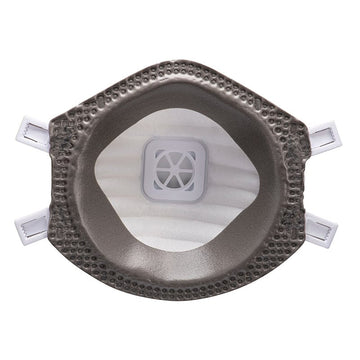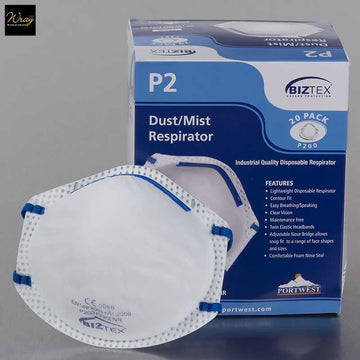Face Fit Testing: Quantitative vs. Qualitative
Face masks and respirators form a crucial part of the protective clothing used within many industries. Depending on the type of work an individual undertakes and the hazards they may face, there are different types of respirators and breathing apparatus (RPE) available.
Any workplace where hazardous substances are at play, a face mask or respirator will be required. These substances could be gases, solvents, sprays, dust, powdered chemicals that can potentially cause long-term damage to a person's lungs and health. Therefore having the equipment fitted correctly will safeguard staff properly.
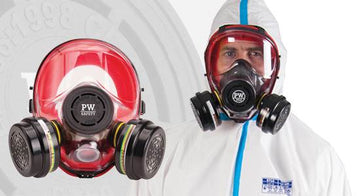
What is Face Fit Testing?
A method for checking that a respiratory facepiece matches the person's facial features and seals adequately to the wearer's face. The performance of respiratory facepieces depends on achieving a good contact between the wearer's skin and the face seal of the equipment.
Everyone's different - people's faces vary significantly in shape and size, therefore it's unlikely that one particular type, or size of respiratory device will fit everyone. Inadequate fit will considerably reduce the protection provided to the wearer. Make sure to check that a wearer can put on a respirator facepiece correctly. Correct fitting of the facepiece at all times is vital to prevent exposure.
How is Face Fit Testing carried out?
There are two basic methods of respiratory fit testing: Qualitative (a subjective test method) and Quantitative fit testing (measurable option). Although both face fit testing methods are widely used for testing RPE, the option right for yourselves depends upon your equipment and environment.
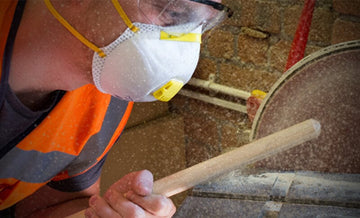
Qualitative fit testing
A simple pass/fail test based on the wearer's subjective assessment of the leakage, via the face seal region, of a test agent. These tests are relatively simple to perform and use the user's taste to determine whether there is a leak or not. Suitable for half masks and disposable masks, but not suitable for full face masks.
Examples of qualitative fit testing methods: method based on bitter or sweet tasting aerosol or odour compounds. For the test itself, the user is advised to wear the test mask, then a strong smelling/tasting spray should be released. This should be conducted whilst performing a variety of movements and light exercises to simulate normal working conditions. If the person can taste the solution, the seal is not effective.
Quantitative fit testing
These require specialised equipment and are possible on all types of masks including disposable masks, half and full face masks. Quantitative tests can give an objective assessment of facial fit and provide a direct numerical result called Fit Factor.
Fit Factor is a measure of how well a particular facepiece seals against the wearer's face. A higher fit factor number means the facepiece achieved a good contact between the face seal and the face during the test. The most common way to do this is using the 'Particle Counting' method, using a machine to do the counting.
Just like the Qualitative method, the wearer is required to do some activities that simulate normal work practices to check the validity of the seal. The machine will then measure the number of particles that enter the mask at this time, comparing it to the number of particles which are challenging it.
Both Qualitative and Quantitative Fit Testing are approved by HSE and must be carried out by an experienced Fit2Fit accredited Fit Tester or a competent person trained to the HSE standard.
Face Fit Considerations
Tight fitting masks prefer the clean shaven look. No hair means those particular masks (ones that require a good seal to the face) prevent leakage of contaminated air.
Stubble and beards will make it impossible to get a good seal of the tight fitting mask to the face. However, often there may be reasons and scenarios where facial hair is unavoidable in which there are alternative, loose fitting forms of RPE and therefore don't have to seal to your face.
These usually consist of a blower unit that wafts filtered air into a hood, helmet or visor. The consistent air churning through means that any leakage through gaps in the seal goes outwards instead, keeping you protected.
Need to have a look at potential options that might work best for you? Have a look at our current range of RPE.
